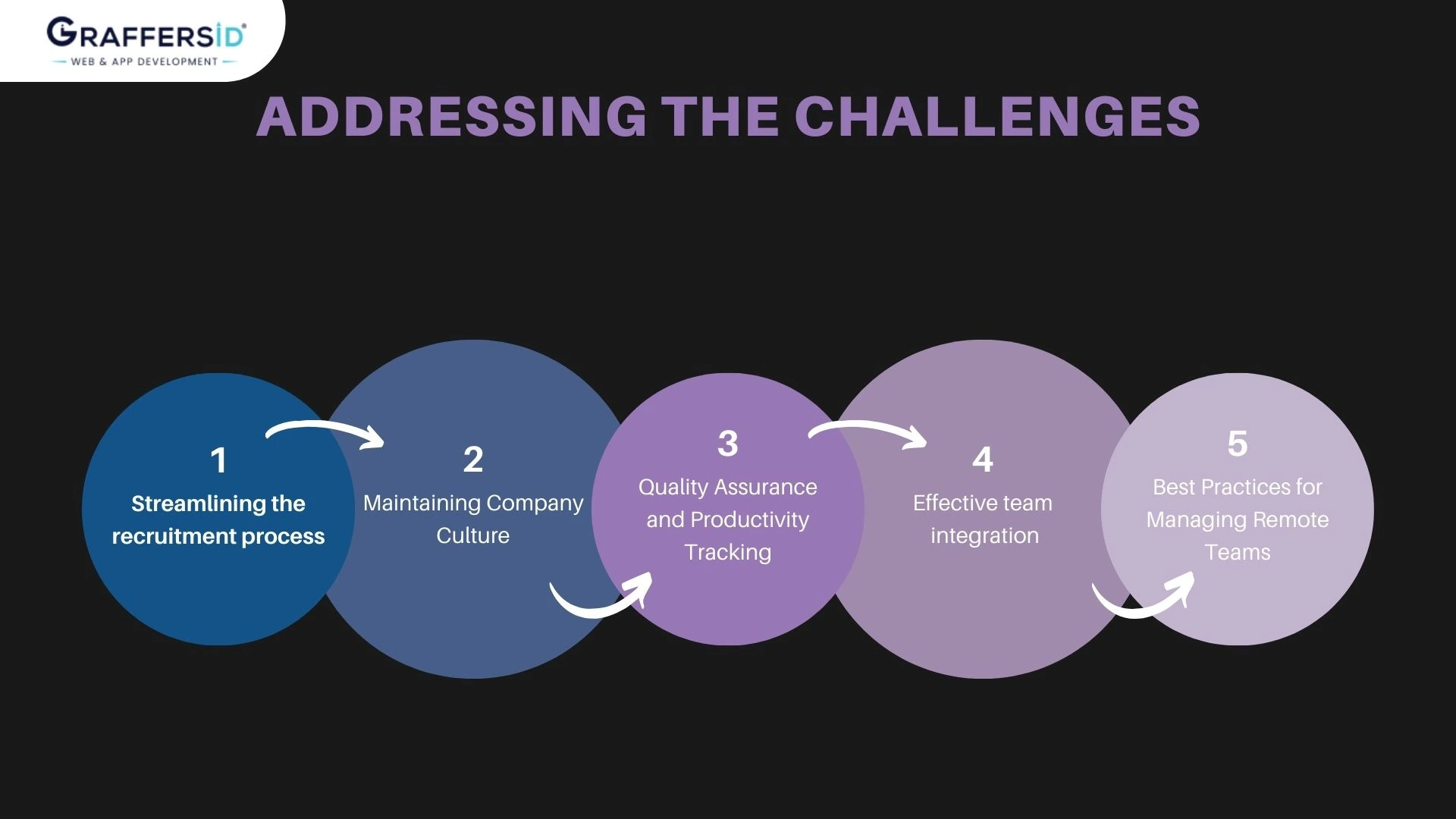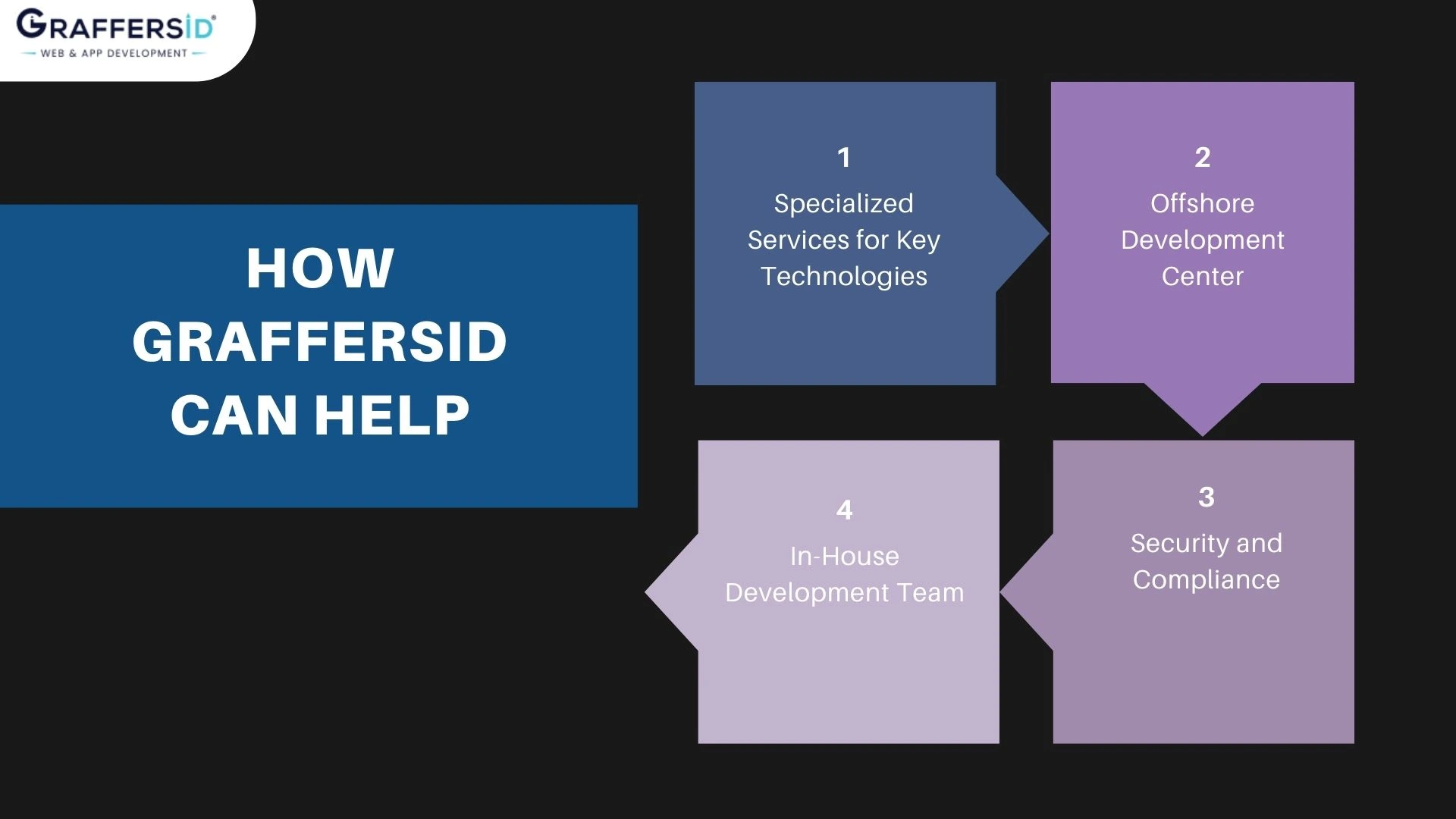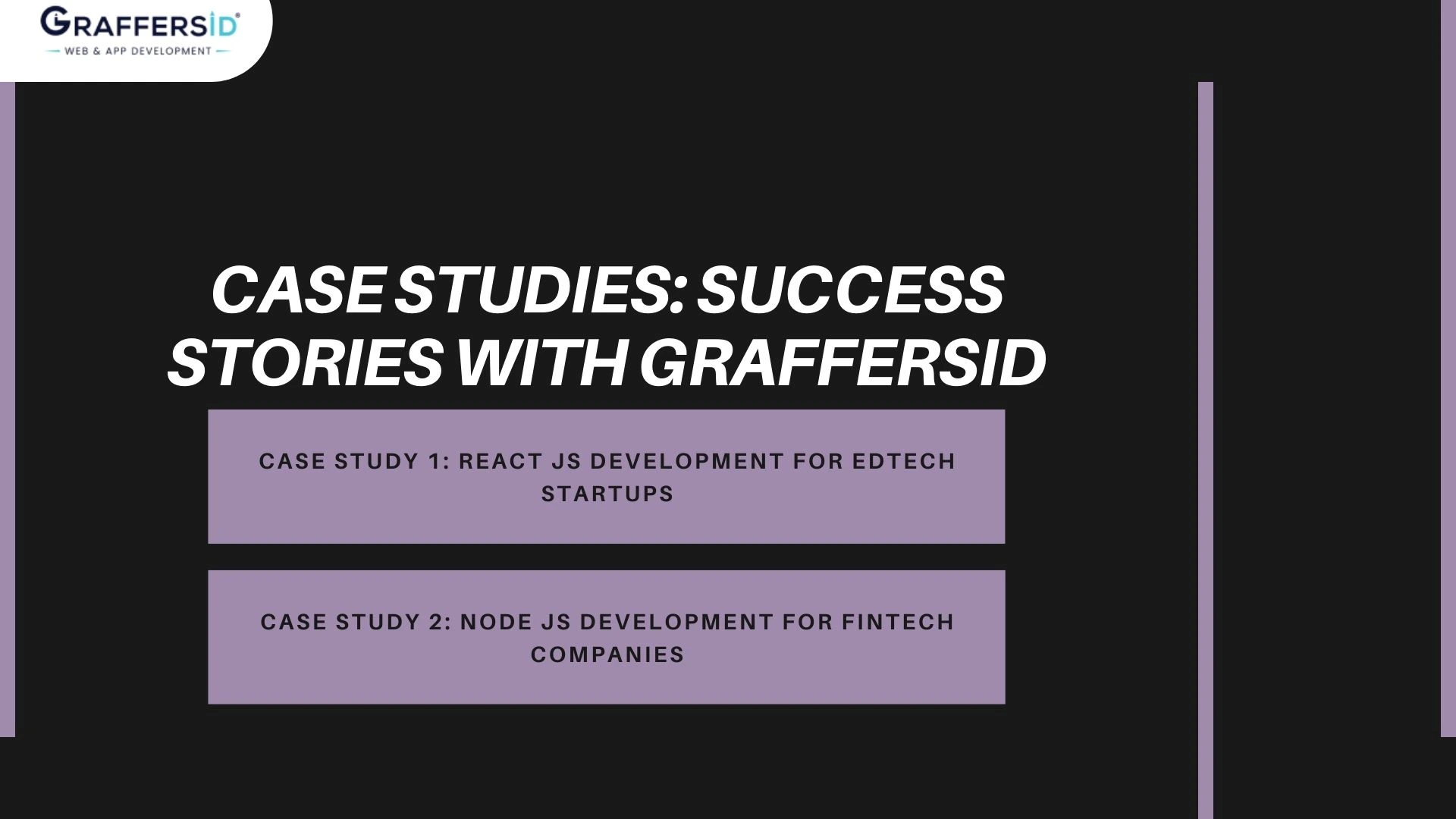Startups require timely augmentation of their workforce. It is an inevitable attribute of achieving accelerated growth rates in the business environment. But, as they say, it cannot grow a horse on an ox’s frame. Managing a growing team is not without its issues that have the potential to slow a business. This blog focuses on team expansion for startups, and their growth and provides possible directions for their problems.
We will also explain how GraffersID, with its focus on services to manage remote software development teams, can help startups address all of these issues effectively.
Understanding Rapid Team Expansion
What is Rapid Team Expansion?
Rapid team expansion refers to the situation where members of a team join and commence working on a project immediately without adequate time to interact with other team members. The process of team growth is defined as the accelerated addition of team members within a startup to address evolving business requirements. This process is very important because a startup has to grow and develop its offerings and markets in the shortest time possible.
Importance for Startups
For startups, verification means the difference between continuing a business at a minimum level of success or having it fail without the capacity to grow. Thus, it enables them to address market opportunities, foster innovation, and sustain competitive advantage. However the rate at which this expansion comes about is not without strengths that present competitive difficulties.
Key Challenges in Rapid Team Expansion
1. Recruitment Bottlenecks
The major issue that becomes a factor of concern is the time it takes to identify and source talent. It is time-consuming and resource-intensive, which is why haste can lead to wrong hiring decisions being made.
2. Dilution of Company Culture
When the team expands, the goal of successful communication becomes difficult to sustain at the company. Some of the organizational effects include: new employees are likely to integrate, therefore creating a disjointed workplace.
3. Ensuring Quality and Productivity
Many a time, especially when the company expands at a very fast pace, it becomes quite hard to ensure that all the personnel are as good as they were in the beginning. This often results in increasing some uncertainties that would hamper the value of the team’s performance.
4. Integration with Existing Teams
The management of new employees’ assimilation into their respective teams is challenging. For new team members to be integrated well, they have to be introduced to their new colleagues and environment well; this can only be done through communication.
5. Managing remote teams
Due to technological advancement and the increase in globalization in workplaces, managing remote employees is now considered a new trend. However, the format is not without its difficulties, such as communication limitations, when there are different time zones.
Addressing the Challenges

-
Streamlining the recruitment process to overcome recruitment bottlenecks, startups should:
AI as one of the methods of selecting employees for positions, for example, AI recruitment platforms. Employ a formal interview system that will help you easily sort through the candidates to find the right one.
Outsource with staffing agencies or augmentation firms such as GraffersID to gain access to talented developers within the shortest time.
-
Maintaining Company Culture
Ensuring that an organization’s values and mission are well communicated to any new employee that joins the organization. Incorporation of orientation programs to ease the integration of subordinates. Promoting good teamwork by arranging activities that will make the team members close friends.
The subtopics that will be addressed include quality assurance and productivity tracking. Ensuring quality and productivity requires being thoroughly prepared for detailed expectations and key performance indicators with regard to all employees. Through the application of project management and collaborative working tools in the assessment of progress. Monitoring and appraising consistently the performance of the bus.
-
Effective team integration
Provide comprehensive onboarding programs. New employees should be grouped or matched with their co-employees or upper colleagues. Identify opportunities to cross-function and spread the word between different groups and teams.
Recommended Strategies for Coordinating Remote Workers
Managing remote teams-
Using tools for communication, which include Slack, Microsoft Teams, and Zoom, among others. Building good relationships and setting expectations on how communication will be done and how often. Having time frames and means to measure the degree of the created change.
Project Management Tools-
Use tools like Trello, Asana, or Jira, to track the progress of the tasks assigned to your remote team. This helps in keeping track of all the work done by the employees in one place. It also helps make the individuals accountable for their work.
Track performance and give regular feedbacks-
By using metrics to track the performance of your employees, you can identify their strong and weak spots. By providing feedback on the same, the performance of the team can be enhanced by many bounds.
How GraffersID Can Help

GraffersID focuses on the administration of remote tech teams to help startups address the challenges associated with the rapid expansion of their teams. Below are some detailed ways that could assist you in achieving the best results.
Minor Services for Major Technologies
React JS Developers: In essence, our React JS developers are able to design excellent and highly interactive web applications. Having worked with many libraries within React, they can develop robust solutions that are flexible in meeting your requirements.
Node JS Developers: They specialize in the efficient development of server-side applications with the help of Node JS. They are familiar with handling large amounts of the same connections at the same time. They can also apply different frameworks and tools to design sharp backend applications.
MERN Developers: The MERN stack, consisting of MongoDB, Express.js, React, and Node.js, can be defined as highly effective for full-stack web development. In MERN developers’ case, they understand how to incorporate these technologies to generate smooth and effective apps.
Other Specialized Roles: We also provide the facility of hiring WordPress, TypeScript, React Native, PHP, Laravel, DevOps, QA testers, HTML5, Shopify, Mobile App, Full Stack, and Angular developers.
Offshore Development Center (ODC): Our offshore development center is a perfect fit for startups because talent acquisition and scaling are systematic challenges that only get worse when you grow fast.
By leveraging our ODC, you can:
Access Top Talent: We have separately structured our ODC team with some of the most experienced developers with experience of handling different projects.
Reduce Costs: Offshore development involves lower charges than onshore hiring, implying that through offshore development, you can cut down on your costs.
Scale Effortlessly:The three different engagement models available give you the privilege of expanding or minimizing the team, depending on your project.
In-House Development Team: We are proud of not outsourcing a single skill at GraffersID and have a 100% in-house development team.
This means:
No freelancers or portals: We have a full-time in-house team of developers to provide you with the best and most proper work.
On-Premise Training Center: We well-train and orient our developers, and we constantly update them on the current technologies in the market.
Past Experience: Our developers have worked on various products and industries. Thus, they will come with some experience that will be helpful for your project.
Active Participation: Our developers are engaged in product talks while creating, which boosts the project’s success rate.
Security and compliance
We prioritize data security and confidentiality through comprehensive measures:
NDAs and Contracts: To ensure the security, we require non-disclosure agreements and clear-cut contract provisions containing data use directives.
Company-Assigned Devices: A computer forensic investigator needs devices that have been pre-configured by the company to limit the capability of sharing information and data.
Daily Code Push: All source codes are pushed on a daily basis to a private repository owned by the client, giving you full control of the project.
Supervised Accountability: In terms of supervision of the developers’ responsibilities, we have a well-developed team structure that will guarantee reliability from inception to completion of the project.
Case Studies:

Case Study I: React JS Development for EdTech Newcomers
An EdTech start-up came knocking on the door of GraffersID to seek the services of our rapid team expansion for the construction of a highly effective learning management system. This way, using specialized React JS developers, the startup expanded its staff and provided the consumer with the requisite product.
Case Study 2: Node JS Development for a FinTech Firm
A FinTech firm was her client who wanted to hire more employees in order to create a safe and effective online lending marketplace. GraffersID supplied senior node-js developers who perfectly fit into the team. They also ensured that they completed the project on time and within the agreed cost.
Conclusion
The rapid growth of teams is an important and effective approach applied by many startups that strive to increase their performance and adapt to the rapidly growing competition. Although some problems need to be solved to implement this project successfully, we must also plan it effectively. Furthermore, in addition to that, we should consider potential challenges that may arise during the planning phase. This way, addressing recruitment bottlenecks, company culture, quality, and remote teams are the areas in which startups can successfully manage all of the enumerated challenges. GraffersID, with a range of specific services oriented to startups’ needs and a team of well-fed developers, is ready to contribute to the progress of fast-growing startups and help them meet their growth goals with the same high-quality and stable productivity. Contact us today!






